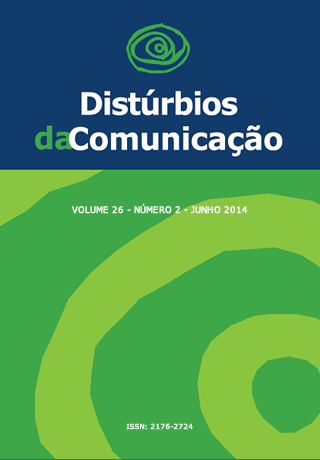Analysis of functional communication profile of a group of mothers and children with Down syndrome
Keywords:
child language, Down Syndrome, family relations.Abstract
Introduction: The genetic characteristics do not predict or determine the efficiency of the use of language by subject. The environment influences are of utmost importance on the language development. In Down syndrome (DS) language development is one of the impaired conditions. Objective: To build a communicative profile of children with DS and their respective mothers. Methods: Cross-sectional study; description of acts and communicative functions. 30 children from five to 10 years, both sexes, took part on this research. Data collection was conducted from a spontaneous interaction situation between mother and child. Then we conducted a descriptive analysis to build the communicative profile of the participants. Results: Children presented 10 communicative acts per minute on average; the gestures were the most common way they used to communicate themselves and the “recognition of the other”, the “commentary” and the “game” were the communicative functions used more often. The mothers had 12 acts per minute on average; used mostly the speech to communicate themselves and the “commentary”, “request for action” and “request for information” communicative functions. Conclusion: After verifying the functional communicative profile of mothers of children with DS, it was observed that this is changed before the linguistic difficulty of the children. Treatment guidelines should be given in order to benefit language development in the family environment of children with DS.Downloads
Download data is not yet available.
Metrics
Metrics Loading ...
Downloads
Published
2014-05-12
Issue
Section
Artigos
License
Copyright (c) 2014 Letícia Viana Pereira, Erika Maria Parlato Oliveira

This work is licensed under a Creative Commons Attribution 4.0 International License.









